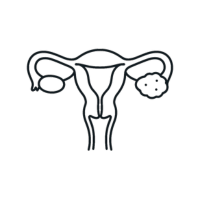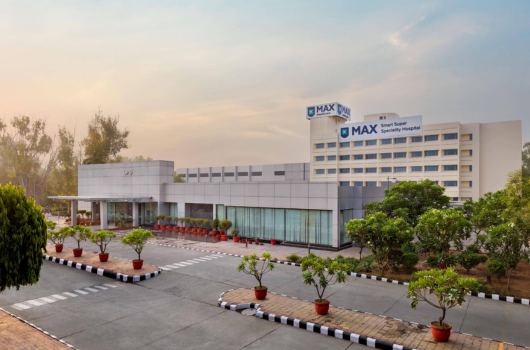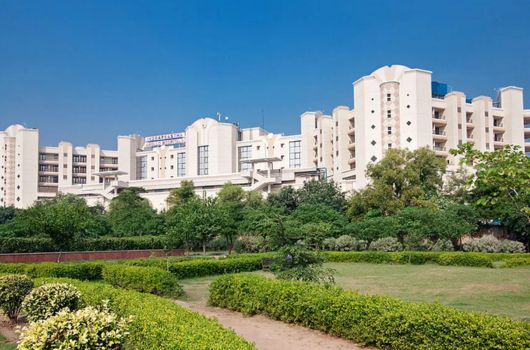
An ovarian cyst is a fluid-filled sac that forms on or inside an ovary. These cysts are common and usually harmless, especially during a woman’s reproductive years. Most ovarian cysts are functional; they form naturally during the menstrual cycle and often disappear without treatment. However, some cysts can grow larger, cause symptoms, or indicate an underlying condition that needs medical attention.
Many women worry that an ovarian cyst might be cancerous, but the majority are benign. It’s also important to note that ovarian cysts are different from Bartholin’s cysts. In the early stages, ovarian cysts often cause no symptoms. But larger cysts may lead to pelvic pain, bloating, irregular periods, or discomfort during intercourse. Understanding these signs is essential, especially for women with a family history of ovarian problems or hormonal imbalances.
A common misconception is that only older women develop cysts or gynaecological issues. Young women can also experience ovarian cysts or related problems such as uterine prolapse.
Knowing the symptoms, risk factors, and detection methods for ovarian cysts helps women seek medical care at the right time. With routine pelvic exams and imaging tests like ultrasounds, doctors can monitor cysts and decide if treatment is necessary. Early diagnosis ensures better outcomes and peace of mind.
A Bartholin’s cyst forms when the duct of the Bartholin’s gland, located near the vaginal opening gets blocked, causing fluid to build up. It often appears as a painless lump, but if it becomes infected, it can turn into an abscess, leading to swelling, pain, and discomfort while sitting or walking. While small cysts may go away on their own, larger or painful ones may require drainage or minor surgery. Early treatment helps prevent complications and recurring infections.
Uterine prolapse happens when the uterus slips down from its normal position and presses into or even outside the vaginal canal. This occurs due to weakened pelvic floor muscles and ligaments, which can no longer support the uterus properly. It’s a common condition, especially in women who have given birth vaginally or gone through menopause.
Understanding ‘why does uterine prolapse occur?’ involves looking at common risk factors like childbirth trauma, ageing, obesity, chronic coughing, and repeated heavy lifting. These issues can weaken the pelvic muscles and ligaments, eventually causing the uterus to sag or shift from its normal position.
Disclaimer: If you experience any symptoms related to ovarian cysts, Bartholin’s cysts, or uterine prolapse, please consult a qualified gynaecologist for proper evaluation and personalised care.
People need ovarian cyst treatment to relieve symptoms, prevent complications, and rule out serious conditions like ovarian cancer. While many cysts go away on their own, some grow larger, become painful, or cause problems such as rupture or twisting (ovarian torsion). Timely treatment helps manage discomfort, protect fertility, and prevent long-term issues.
In some cases, untreated cysts can lead to emergencies that require immediate surgery. For women trying to conceive or those with hormonal imbalances, treating ovarian cysts is also important for reproductive health.
Ovarian cysts develop for various reasons, often linked to hormonal changes or underlying health conditions. Most cysts are benign and form during the menstrual cycle, but other types may require medical attention. Common causes include:
Most ovarian cysts cause no symptoms, especially if they are small. However, when symptoms do occur, they may include:
While most ovarian cysts resolve on their own, some home remedies may help ease discomfort and support hormonal balance. Always consult a doctor before trying any remedy, especially if you're in pain or the cyst is growing.
1. Warm Compress or Heating Pad
2. Epsom Salt Bath
3. Ginger Tea
4. Apple Cider Vinegar (ACV)
5. Flaxseed
6. Castor Oil Pack
7. Healthy Diet
8. Stay Active
These home remedies are meant to provide general comfort and support overall well-being. They are not proven medical treatments for ovarian cysts and should not replace professional medical care.
These symptoms lead to treatment when tests confirm the presence of an ovarian cyst that is large, painful, or persistent. Treatment is also needed if the cyst is causing complications like torsion or rupture, or if there’s concern about cancer risk. Even small cysts may require monitoring if symptoms are ongoing or if the woman has a history of ovarian problems.
Detecting ovarian cysts early helps prevent complications. If a doctor suspects a cyst based on symptoms or a pelvic exam, they may suggest the following tests:
If you experience any of these symptoms for more than a few weeks, it is important to seek medical advice. While many ovarian cysts are harmless, early diagnosis helps prevent complications and ensures the right treatment. If you or your loved ones are facing symptoms or have concerns about ovarian health, Bangla Health Connect connects you with experts at trusted hospitals worldwide.
.png)
Through Bangla Health Connect, Bangladeshi women can access trusted hospitals across India, Thailand, Singapore, and other countries that are recognised for advanced gynaecological and reproductive care. Many families travel abroad because of the proven expertise and high success rates offered by these international treatment centres.
Here’s why Bangladeshi patients choose ovarian cyst treatment with Bangla Health Connect’s worldwide network of trusted hospitals:
Bangla Health Connect helps Bangladeshi patients connect with expert specialists, affordable treatment plans, and dependable care across trusted hospitals worldwide.
Bangla Health Connect connects Bangladeshi women with some of the most trusted hospitals offering expert ovarian cyst treatment worldwide. These centres provide comprehensive gynaecological care, advanced laparoscopic and robotic surgery, and dedicated support for international patients.







.png)





.jpg)


.jpg)



.png)
.png)

.jpg)




Bangla Health Connect helps patients choose the right hospital based on their reports, treatment plan, and budget, ensuring comfort, transparency, and complete support throughout the treatment journey.
The average cost of ovarian cyst treatment is generally around $1,800 to $2,500 in India and $4,500 to $6,000 in Thailand. The final cost may vary depending on the treatment method, hospital location, and type or complexity of the cyst. Before viewing the detailed table of treatment-wise costs, it’s helpful to understand what influences these expenses most.
Note: India is well known for offering cost-effective and advanced gynaecological care. Hospitals combine affordability with precision-based laparoscopic and robotic technology, ensuring safety and shorter recovery for international patients.
Note: Thailand’s hospitals are preferred by patients seeking premium gynaecological care and faster recovery. The higher cost reflects the use of imported equipment, modern infrastructure, and complete international patient packages.
The costs listed are approximate and may differ based on hospital, city, and treatment duration. Consult your healthcare provider for accurate and updated estimates.
The currency conversion rates in the table above are based on data from November 2025.
For more help on cost estimates and personalised guidance, contact Bangla Health Connect.
Ovarian cysts treated with laparoscopic cyst excision have a recurrence rate of just 4%, compared to higher recurrence rates seen with cyst aspiration. This suggests that excision offers more lasting relief from cysts and related symptoms. Moreover, the likelihood of unexpectedly discovering ovarian cancer during laparoscopy for benign-appearing cysts remains very low, under 1%.
Success in ovarian cyst treatment means the cyst is safely removed or resolved, symptoms are relieved, and the patient returns to a healthy, pain-free life.
Leading hospitals worldwide focus on minimally invasive procedures and personalised care to ensure safety and precision. Their approach includes:
This multidisciplinary approach helps women achieve faster recovery and better long-term outcomes.

In an awareness session, Dr. Meenakshi Sundaram, Consultant Gynaecologist and Laparoscopic & Robotic Surgeon at Apollo Women’s Hospitals, Chennai, explained the key difference between ovarian cysts and uterine fibroids. Ovarian cysts are fluid-filled sacs that develop within or on the surface of the ovaries, while uterine fibroids are solid, non-cancerous growths that form within the muscular wall of the uterus. This is the primary difference between the two. She added that, although rare, it is sometimes possible for cysts to develop near the uterus and fibroids to appear close to or on the ovaries.

Dr. Rooma Sinha, Obstetrician & Gynaecologist, Apollo Hospitals Hyderabad, debunks several common myths about ovarian cysts. She explains that not all ovarian cysts cause infertility or are cancerous. Most are benign and do not impact fertility. Surgery is not always needed, as many cysts resolve on their own, and when required, minimally invasive techniques are preferred over open surgery. She clarifies that not all cysts are due to PCOS, and most are painless and discovered incidentally. Importantly, not every cyst needs removal unless it causes symptoms or shows suspicious features. Dr. Sinha warns against ignoring cysts and stresses the need for proper medical evaluation and follow-up to avoid complications like torsion or bleeding.
If you’re unsure how to plan ovarian cyst treatment abroad, the most important step is to connect with the right specialist and hospital early. That’s where Bangla Health Connect helps, providing trusted guidance and end-to-end support for Bangladeshi women seeking safe and affordable treatment overseas.
Choosing Bangla Health Connect ensures that every patient receives personalised support, from selecting the right hospital abroad to returning home with peace of mind.
Note: Bangla Health Connect does not offer medical advice.
✅ Share Your Reports - Bangla Health Connect connects you with trusted hospitals worldwide.
✅ Get treatment plans from leading Hospitals worldwide
✅ Choose the one that fits you
✅ Let us handle the rest
Yes. Bangladeshi patients need a medical visa to travel for treatment. Bangla Health Connect helps with hospital invitation letters and provides full guidance for visa documentation.
Yes, you can bring one or two attendants. They can apply for a medical attendant visa along with your application.
Most laparoscopic surgeries require 1 to 3 days of hospital stay, and patients can usually return home within 7 to 14 days after surgery. The exact duration depends on your recovery and doctor’s advice.
No. Many ovarian cysts resolve naturally or with medication. Surgery is recommended only when the cyst is large, painful, or shows concerning features on imaging. Treatment for ovarian cysts should always be guided by a qualified gynaecologist.
Most ovarian cysts are benign (non-cancerous). Your doctor may recommend a CA-125 test or imaging if there’s any doubt about malignancy, especially in postmenopausal women.
Bangla Health Connect provides transparent cost estimates from multiple hospitals abroad, helping you choose the most suitable and affordable option.
Yes. BHC’s Bengali-speaking coordinators assist with airport pickup, hospital navigation, and follow-up support to ensure a smooth experience throughout your treatment.

